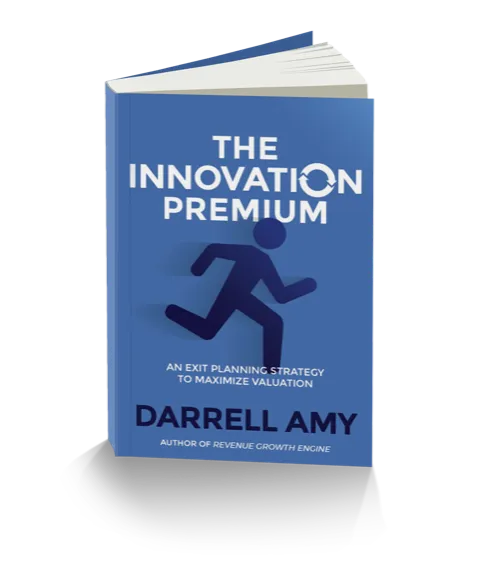THE VALUE CREATION BLOG

Market Volatility Creates Midmarket Opportunity: How to Capitalize Now
When chaos hits Wall Street, Main Street can gain ground—if it focuses on value.
The public markets are shaking. Between geopolitical unrest, tariff swings, and the ongoing correction of tech stock valuations, the S&P 500 is down 13.7% year-to-date (as of 7:00 a.m. Monday, April 7)—with signs pointing to further declines.
This volatility has investors rattled, but for privately held midmarket companies, it may be a rare window of opportunity.
Midmarket business owners who stay alert and act strategically can capitalize on this turbulence. The key is to move beyond fear and focus on creating value.
“The ultimate goal of every business owner should be to maximize value—not just profit.” — A Business Owner’s Guide to Maximize Business Valuation
Fear Leads to Paralysis. Value Creation Leads to Opportunity.
When uncertainty rises, it's tempting to hunker down. But the most successful companies lean in. They shift from defensive to strategic—and they win.
This is the time to act on the upside of change.
3 Potential Opportunities for Midmarket Businesses
1. Capital Is Looking for Safer Homes
As capital flees public markets, it needs a place to land. Private, profitable companies—especially those with steady revenue and leadership continuity—become incredibly attractive.
This is especially true for the growing number of retired investors who were once business owners. Many feel more confident investing in what they understand: private companies with tangible operations and transparent leadership. These investors are increasingly open to deploying capital into privately held businesses.
Now is the time to position your business as investable. With the right story and financial foundation, you may attract:
Passive investors seeking reliable returns
Strategic investors looking for operational involvement
Partners open to growth equity or recapitalization
2. Lower Interest Rates Could Unlock Growth
Market volatility increases pressure on the Fed to lower rates and stimulate the economy. For midmarket businesses, this could mean access to more affordable debt capital.
“A company with a higher value represents a lower risk to a lender. The company with a higher value therefore should be able to get a lower interest rate on debt.” — A Business Owner’s Guide to Maximize Business Valuation
Use this environment to:
Refinance higher-cost debt
Fund acquisitions
Invest in strategic growth initiatives
3. Acquire, Integrate, and Reshore
Uncertainty often motivates smaller business owners to consider selling. Seeing choppy waters ahead, many of them may simply not want to ride out another storm. This opens the door for:
Strategic acquisitions of competitors
Expansion into adjacent industries
Geographic growth through regional rollups
But there’s more: now may be the time to consider reshoring production.
Volatility in global supply chains has many companies reconsidering overseas dependencies. By vertically integrating your supply chain, you can:
Gain more control over quality and timing
Reduce geopolitical risk
Increase margins and responsiveness
Create strategic differentiation
This kind of bold move—reshoring and integration—not only builds resilience, but also adds enterprise value. It aligns directly with the Strategic Innovation Engine and Process Optimization Engine from the Value Creation Engines framework.
What To Do Now
1. Know Your Business Value
Your value = Recast EBITDA × Industry Multiple This equation determines whether you're perceived as a risky bet—or a valuable opportunity.
“Only 40% of middle-market businesses have had a valuation done in the last 3 years.” — National Center for the Middle Market
To unlock strategic capital or execute acquisitions, start with a clear understanding of your current and potential valuation. Begin with the Value Creation Engines MAX Process: Measure → Accelerate → eXpand/eXit/eXchange.
2. Call a Strategic Summit
This is not business as usual. This is the moment to step back and reimagine forward.
Gather your leadership team for a deep strategic reflection session—a Strategic Summit—with a singular purpose: reevaluate your theory of business.
As Peter Drucker challenged:
“What is our business? Who is our customer? What does the customer value?”
Reflect on:
How is the market landscape changing?
What assumptions are no longer valid?
What risks have emerged—and what new opportunities?
How can we deploy our Value Creation Engines for maximum impact?
Don’t just adjust tactics—reset your strategic frame. Make space for thoughtful, long-form discussion. The best ideas often emerge when the pace slows and strategic minds collide.
3. Grow With Intentional Action
Use the output of your Strategic Summit to:
Refocus your Value Creation Engines:
Set quarterly goals and OKRs around valuation
Launch 90-day Value Creation Sprints
Build momentum—one quarter at a time
“Companies that drive both net-new and cross-sell at the same time are able to experience exponential revenue growth.” — A Business Owner’s Guide to Maximize Business Valuation
Take the First Step
Start by measuring your business value and updating the value quarterly. This gives you a data-driven foundation to make bold decisions and seize opportunities in real time.
Book a free, confidential consultation to find out what your business is worth—and how much more it could be worth: 👉 measure.valuecreationengines.com
Originally published on Darrell Amy's LinkedIn.
FREE BUSINESS VALUATION
What is Your Business Worth?
You can Discover the Value of Your Business in Less than 20 Minutes!
Join 70,000 business owners and get your score on the 8 Factors That Drive Your Company’s Value, a comprehensive analysis of your score and a detailed action plan for how to improve your score on each.


PREORDER YOUR FREE COPY NOW
Discover How to Create a Premium Valuation for Your Business
Learn how to command a premium multiple on your business
Find out why buyers discount their offers
See how innovation can help you create a premium valuation
Estimate your company's innovation index



